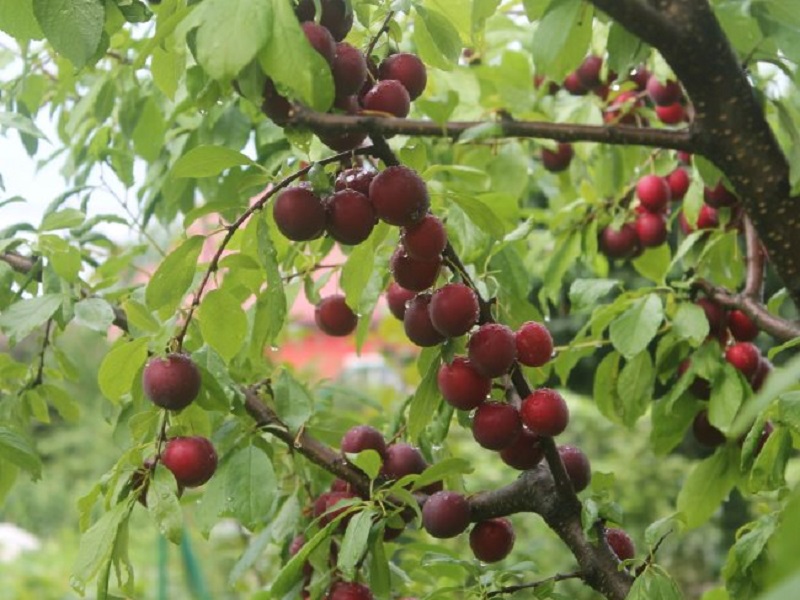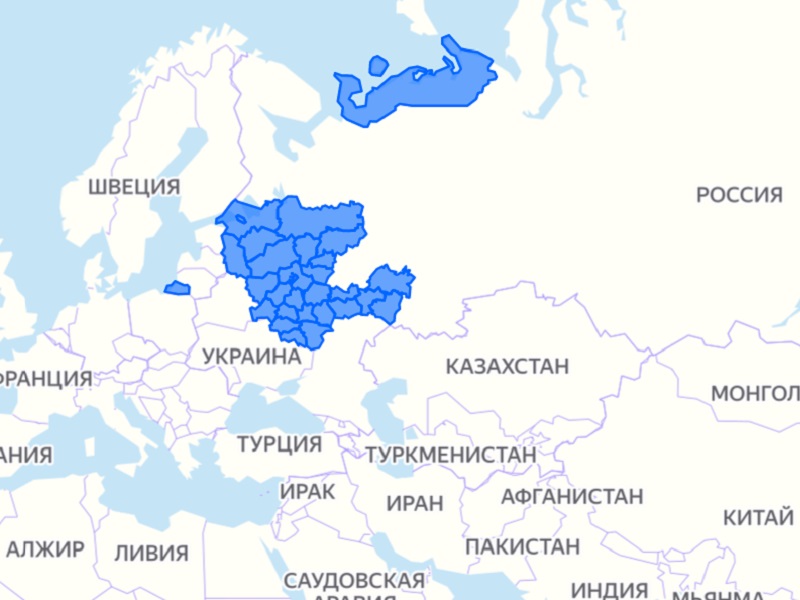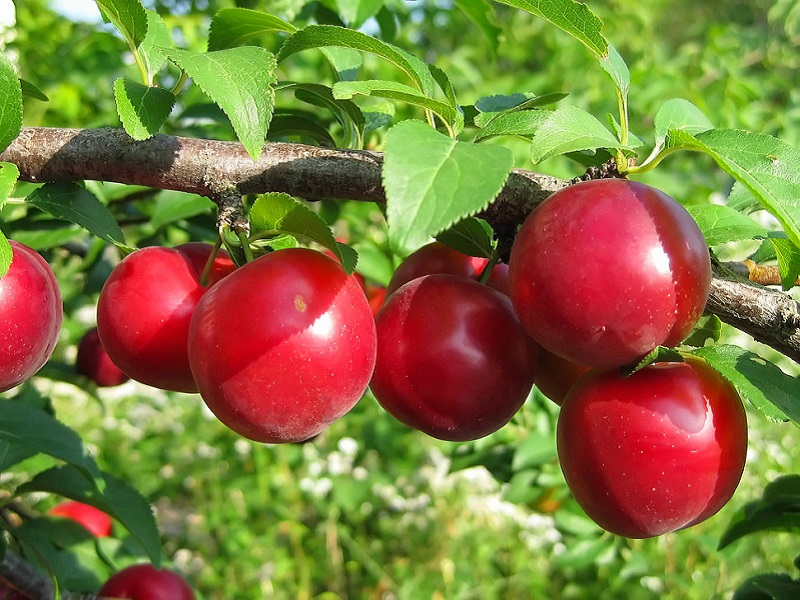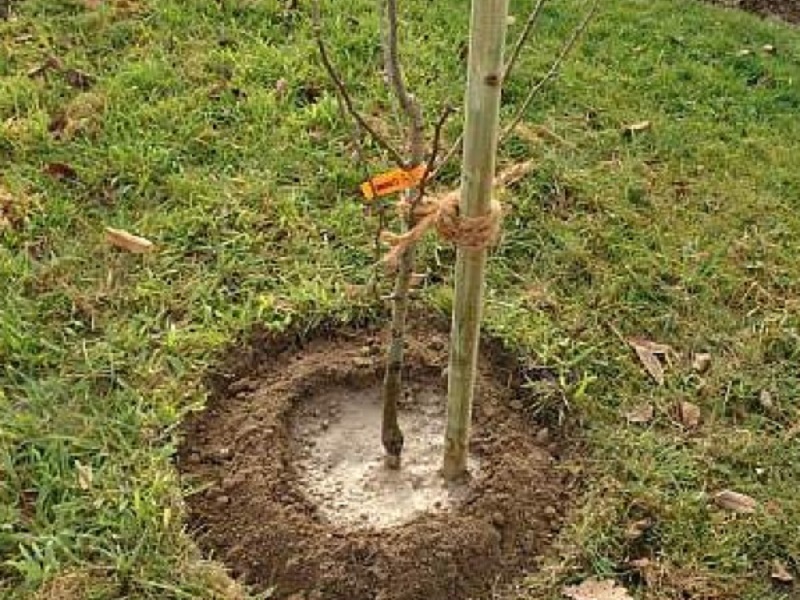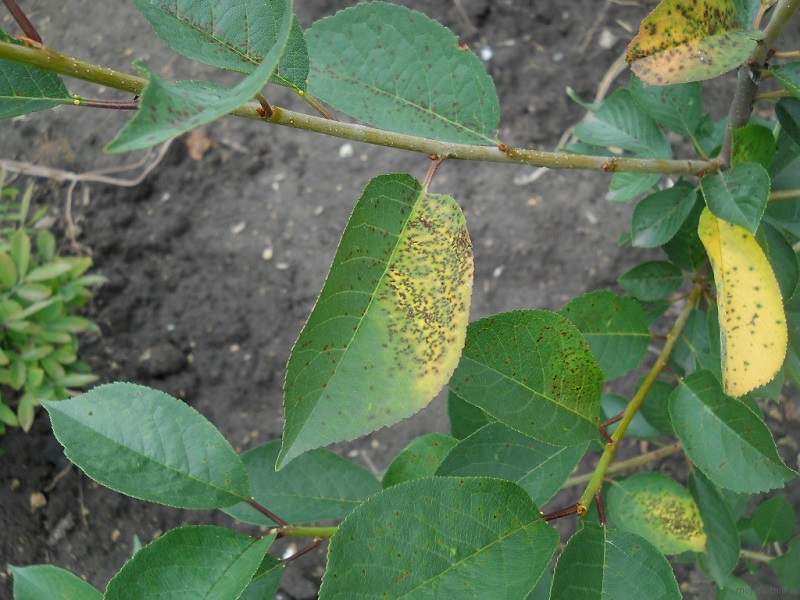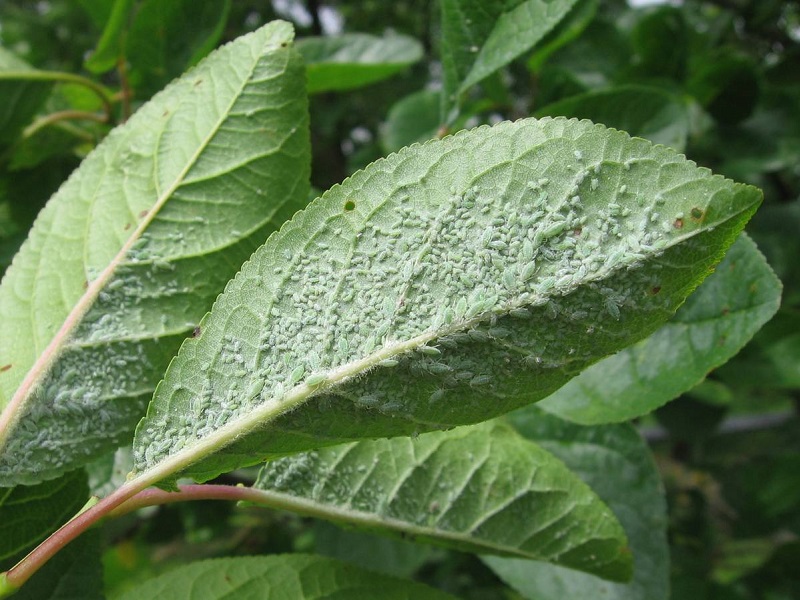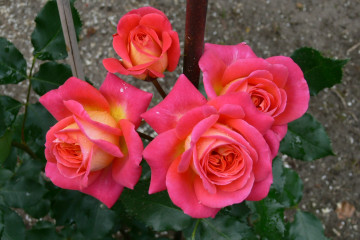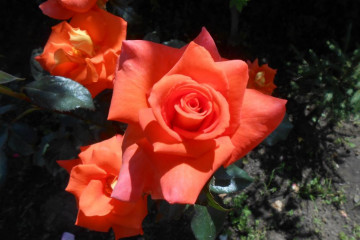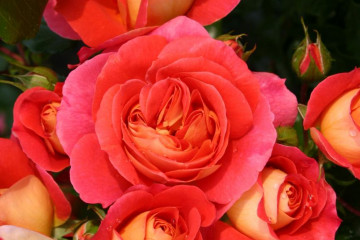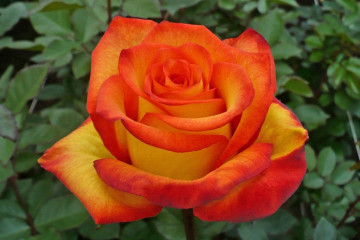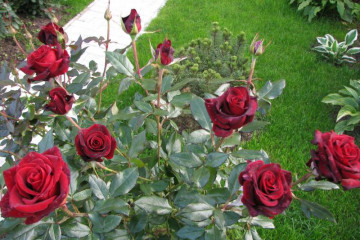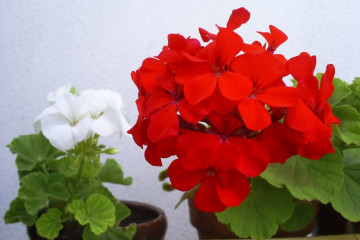Red plum early ripening: what kind, description
Content:
When forming your own garden in Siberia, it is important to choose the right fruit crops. Plum is a popular fruit tree. Gardeners want to grow tasty and healthy plum fruits on their site, so they are afraid to make a mistake with the variety. Among the many varieties, Skorospelka red, although it does not compete with the varieties of the southern strip, is distinguished by its unpretentiousness and endurance. These characteristics are especially important for gardeners in the area of risky farming.
The history of breeding varieties
Plum with red pulp, what kind of variety, many gardeners are interested in. Plant of folk selection, roughly a seedling of the Common Hungarian. Enriched the collection of the VIR named after N.I. Vavilov since 1926.
This culture is inherited from the former nursery of J. K. Kesselring and A. E Regel, who in Russia in 1862 was the first to establish a pomological garden near St. Petersburg.
Recommended regions on the map: Northwest, Central, Middle Volga.
Picture 2 Regions for cultivation on the map
Description plum Skorospelka red
A compact tree 3.5 m in height has an oval or spherical crown. The bark has a brown tint, slightly rough. Shoots are slightly curved, greenish-brown, up to 30-40 cm long.
The plant is decorated with green leaves of an oblong shape, of medium size (7-9 cm in length, 4-5 cm in width). The surface is smooth and glossy. The edges of the sheet plate are zigzag.
The fruits are small, weighing 10-15 g, oval or ovoid, with a pointed apex. The peel is well removable, has an average density, is colored red with a pink tint. There is a bluish-blue waxy coating on the surface. The pulp is yellow, granular and fibrous, of moderate density and juiciness. The stone is oblong, with a pointed, slightly bent cone, of medium size (24 × 14 × 9 mm, weight 1-1.3 g), well separated from the pulp.
Advantages and disadvantages of the variety
Due to its many advantages, the red plum is popular not only with private gardeners, but also in large-scale farms:
- high and stable yields, up to 40 kg can be obtained from one tree;
- separability of the bone from the pulp;
- the ability to adapt to sudden changes in ambient temperature;
- excellent frost resistance and drought resistance;
- the possibility of reproduction using cuttings;
- resistance to diseases and pests inherent in the culture;
- good early maturity;
- long life span - 25 years;
- versatility in use, the crop is suitable for use, both fresh and for various blanks.
The description of the variety also provides for the designation of the shortcomings of the Skorospelka red plum:
- uneven fruit ripening
- the need for pollinating trees;
The fruit plant has many more advantages than disadvantages, which explains its popularity among summer residents.
Drought resistance, frost resistance
The culture is very hardy, not afraid of drought and frost.The tree can withstand temperatures as low as -38 degrees. With a moisture deficit, the fruits may crumble, but this does not affect the yield indicator. Thanks to these characteristics, the plant has earned its place in gardens, in summer cottages.
Taste qualities
The variety is appreciated for its balanced taste, harmoniously combining sweetness and acidity. The tasters rated the red plum 3.7 points.
Chemical composition:
| Dry matter | 13,6 % |
| Sahara | 8,5 % |
| Pectin substances | 1,08 % |
| Titratable acids | 2,1 % |
| Tanning and dyeing elements | 0,16 % |
| Vitamin C | 8.4 mg / 100 g |
The calorie content of 100 g of plums is 42-49 kcal. The fruits are balanced in terms of the content of fats, proteins and carbohydrates necessary for the normal functioning of the body. These indicators explain the benefits of the product and its active use in the treatment of many diseases.
Plum pollinators Skorospelka red
The early ripening variety is partially self-fertile. Top pollinators:
- Hungarian Moscow;
- Nikolskaya white;
- Collective farm renklod;
- Hungarian Pulkovskaya;
- Ural red;
- Winter white;
- Ochakovskaya black;
- Renclaude Reform.
For a good ovary, experts recommend planting cherry plum next to the red plum.
Landing features
The guarantee of successful development and favorable existence of the plum tree is the competent planting of early ripening plums.
It is better to plan planting work in spring (April-early May), especially in Siberia and the Urals.
Choose an open plot, protected from drafts. Do not plant fruit crops in the shade. The tree should receive the maximum amount of solar energy.
Having correctly determined the coordinates of the place, you can proceed to landing, which consists in performing the following actions:
- Dig a hole, at the bottom of which to form a hill from a soil mixture containing the top layer of garden soil, organic matter and minerals.
- Install a peg to securely support the young tree.
- Lower the seedling by gently spreading the roots and bury, shaking the plant to distribute the soil between the roots.
- Cover with fertile soil, compacting well, in order to avoid the formation of voids. In this case, the root collar should be 5-7 cm higher above the ground.
- Water abundantly and cover with humus in a layer of 2 cm to retain moisture in the soil.
Care rules
Health, development, fruiting of Skorospelka red plum depend on the efforts spent by gardeners on the necessary agrotechnical measures. Competent care increases yields, prolongs life, gives a beautiful appearance to the garden, and also prevents the development of dangerous diseases in it.
Care consists in carrying out procedures aimed at ensuring the survival of the plant after planting and creating comfortable conditions for growth. Fruit culture requires:
- correct watering, especially at the time of intensive plant growth and fruit formation;
- loosening the top layer of the soil to a depth of 10 cm, to reduce evaporation, preserve the maximum amount of accumulated moisture;
- feeding with nutrients, by introducing complex fertilizers containing organic matter, mineral compositions over the entire area of the roots;
- forming, rejuvenating, thinning pruning, in order to stimulate the growth of new shoots, form the growth of tree branches, its crown;
- protection for the winter, by covering with spruce branches or other improvised materials, which will avoid freezing of plums and damage them by rodents.
Having received care and attention, the red plum inside will surely give you a rich harvest, which will delight you with juicy pulp, rich taste and an extraordinary bouquet of aromas.
Diseases and pests, methods of control and prevention
The variety of red round plum demonstrates persistent immunity to diseases, but preventive measures should not be neglected, since not a single crop is insured against fungal infections associated with an excess of moisture in the soil.
| Disease | Symptoms | Prophylaxis | Treatment |
| Rust | The formation of brown spots with a rusty tinge between the veins of the leaves. | Treat the seedlings with fungicides before planting, feed the plants with minerals. | Spray 2-3 times with Bordeaux solution (1%) at intervals of 10 days. |
| Fruit rot | Dark spots on the fruit that gradually cover the entire fruit. | Avoid mechanical damage to the drain, spray every 3 days with an iodine-based solution. | Collect and incinerate affected parts. |
| Hole spot | The presence of small red spots, in the place of which holes are formed. Leaves and shoots dry out, and the fruits are deformed. | Provide proper watering, remove weeds in a timely manner. | Spray the plant with copper sulfate before and after flowering. If the disease continues to progress, repeat the procedure after harvest. |
Plum with red pulp also attracts such dangerous pests as plum sawfly, aphids, moths. These insects can cause irreparable harm to the plant.
| Pest | Prophylaxis | Control measures |
| Plum sawfly | Loosen the soil, thoroughly moisten it at the time of flowering. | Burn infected plant parts. |
| Moth | In time, remove the near-stem circle from fallen fruits and loosen the soil. | To clear the trunk of extinct bark, shake off the mutilated fruits, apply insecticides. |
| Aphid | Constantly eliminate weeds and water. | Treat the crown with insecticides. |
Skorospelka red plum is a reliable variety that can bring a good harvest even after a harsh winter. Culture will delight for a long time with its juicy and tasty fruits not only in the Moscow region, but also in Siberia, the Urals, and other regions with a cold climate.
